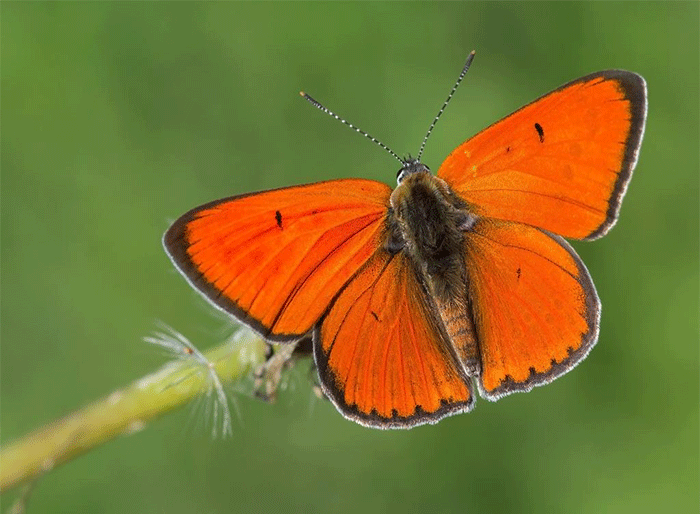Appearance of Large Copper Butterflies Cause Stir in the Black Country
Extinct in Britain since the 1850s, the sudden appearance of Large Coppers in Dudley and Rowley Regis sparks fascination, controversy, and conservation concern.

A mysterious arrival
The unexpected appearance of the Large Copper butterfly in the Black Country has sent ripples of excitement through the wildlife community. The species, long extinct in Britain since the mid-19th century, was spotted at the Bumble Hole and Warrens Hall Nature Reserves. Experts believe the individuals are of the European subspecies and were almost certainly bred in captivity before being deliberately released.
Hundreds of enthusiasts have descended on the reserves in recent days, eager to glimpse and photograph the dazzling orange-and-black butterflies. For many, it is a once-in-a-lifetime sighting. "I probably won't see any of these again - they're extinct in Britain," said Steve Hextell from Sutton Coldfield. "Whether they'll survive or not is another matter but it's worth coming to see them."
Excitement and strain on reserves
The influx of visitors has thrilled and challenged local conservationists. Brenda Myers, chair of the Bumble Hole Conservation Group, said: "It's just been manic, absolutely manic. The majority of people have been careful and understanding, but some unfortunately have trampled the area down a little bit."
For many, the spectacle is bittersweet. The Large Copper (Lycaena dispar) once thrived in Britain's fenlands before vanishing in the 1850s due to habitat loss. Now, its unexpected reappearance is raising questions about human interventions in nature.
Clues point to captive release
Mike Williams of Butterfly Conservation’s West Midlands branch described the situation as "a bit of a detective story." While it is legal to buy eggs and caterpillars online, it is not permitted to release them into the wild without formal approval.
"I think someone has bred Large Coppers in captivity and decided to release them here," Williams explained. "It's far from a wise move. These releases hardly ever succeed. People shouldn’t take this into their own hands and release butterflies willy nilly."
Recent years have seen similar controversies, from the illegal release of beavers in England to reports of lynx being freed in Scotland. Each case has provoked debates over whether such unsanctioned rewilding efforts are bold acts of activism or reckless gestures that undermine conservation science.
Bleak outlook for survival
Despite the spectacle, experts are not optimistic about the butterflies’ chances of establishing themselves. While one of their host plants, Great Water Dock, is present in the reserves, it is in too short supply. The reserves themselves are also far too small to support a viable population.
"It requires a very large area of habitat to be successful and we haven't got that in the Black Country," Williams said. "Sadly I don't think they'll last. I think they will eventually die out." Harsh British winters are also likely to prove fatal to the European butterflies.
A lesson for conservation
For conservationists, the episode highlights the importance of planned, science-led reintroductions. Williams pointed to successful programmes involving the Large Blue butterfly and Wood Whites, which were carefully managed with proper habitat preparation, regulatory approval, and collaboration with landowners.
"None of these steps have happened here," he said. "If people want to help butterflies, the best way is to work with organisations, plant pollinator-friendly plants, and volunteer on conservation projects."
While the Large Copper’s brief reappearance may not herald a true comeback, it has captivated the public imagination and reminded many of the fragile beauty of Britain’s butterfly fauna.
August 2025
Share this story







